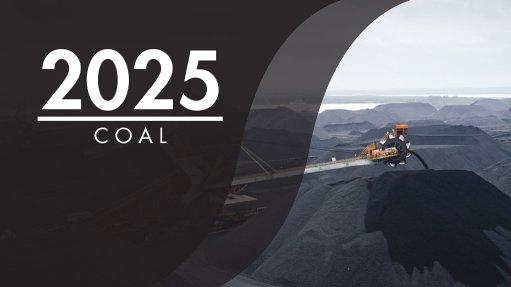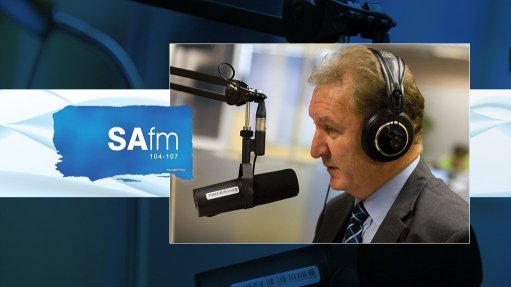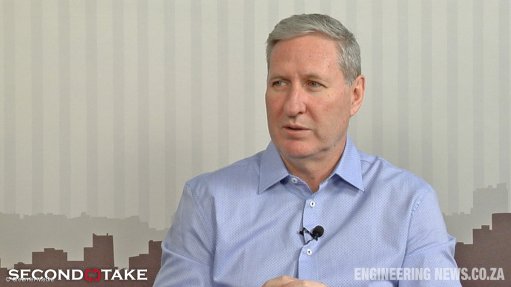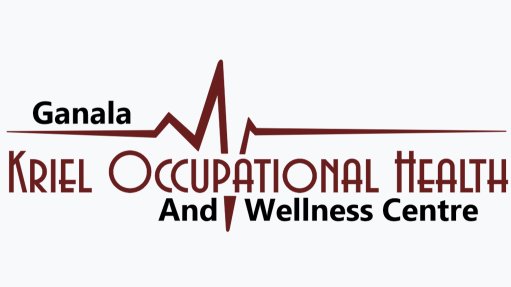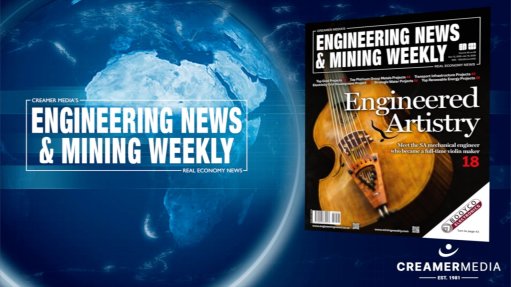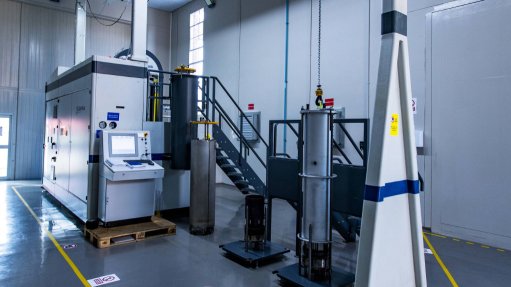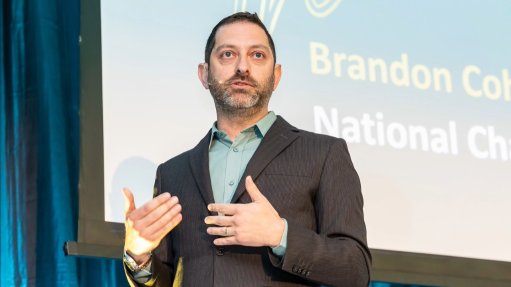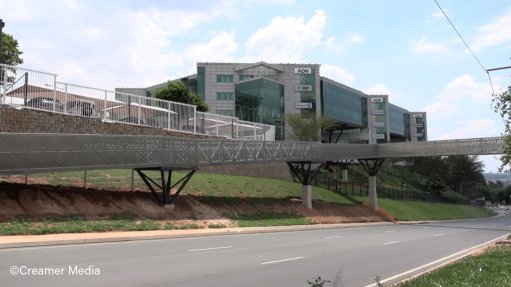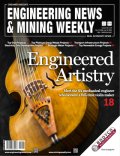New Wits School of Mining head eyes top-ten spot in global ranking
Following his appointment in February as the head of the University of the Witwatersrand’s School of Mining Engineering, Dr Paseka Leeuw has set out his ambitions for one of the world’s largest mining schools, including securing a spot among the global top ten.
With plenty of momentum built by Leeuw’s predecessors, this could become a reality within the next few years for the large mining school, which boasts about 700 undergraduate and postgraduate students, a permanent academic staff complement of 23 and 13 visiting and honorary professors.
“Wits is a solid brand in mining education, reflected by our current place at number 11 in the QS World University Rankings for Mineral and Mining Engineering.
“We are confident that we remain among the world’s best, having been among the top 20 since 2016, and are pushing hard to be ranked within the top ten in the world,” he says.
This is one of five strategic goals, which also include ensuring that the skills graduates acquire have an immediate impact in the sector, having already been aligned with industry requirements, he tells Engineering News & Mining Weekly during an interview.
The school partners and collaborates extensively with business, industry and other local institutions to enhance the quality of its teaching and produce research that is both impactful and relevant to the mining sector.
He notes that, owing to limited bursaries from mining companies, most students have never been on a mine.
“It is therefore important that our learning process includes practical opportunities to experience the mining environment.”
The school has forged close working relationships with major mining companies such as Anglo American, Anglo American Platinum (now Valterra Platinum), African Rainbow Minerals, Harmony, Seriti Resources and Sibanye-Stillwater. It is also strengthening its links with junior mining companies.
The school has also built on-site facilities to simulate the mining environment, and provides students with access to the Wits Mining Institute’s Sibanye-Stillwater Digital Mining Laboratory – a one-of-a-kind laboratory conducting research on how digital technologies can make mining safer and more sustainable.
The Wits School of Mining Engineering took a major step in 2018 to embrace the technological advancements under way in mining and in the economy more generally, he explains, highlighting how the curriculum was aligned to the Fourth Industrial Revolution, as well as the transition into the Fifth Industrial Revolution.
Second-year students, for example, learn the basics of programming and are introduced to the principles of automation and robotics in mining, and many carry out assignments to develop digital applications, leveraging the power of this technology to make mining safer and more efficient.
“Data is a key focus as there are increasing volumes of data being generated in mining operations, not least by sensors in a wide range of mining and processing equipment. The industry’s challenge is to generate value by analysing these large data sets for insights into working smarter.”
Leeuw notes that, while the minerals sector in South Africa and the rest of the continent is a significant contributor to economic growth and social upliftment, it needs to be supported by a reliable supply of skills and innovation that leverages the power of the digital economy.
These resources have contributed to the school’s graduates being highly sought after, not only in South Africa, but on the African continent and the rest of the world.
“One of the things that we see ourselves doing is to produce engineers that could work anywhere else in the world.”
This is an ambition that extends to the staff members, with plans over the next two to three years to create opportunities for them to teach anywhere in the world and bring critical knowledge back to South Africa.
“We also place emphasis on our research output, which is guided and facilitated through our engagement with mining companies, research bodies and other universities – thanks to the industry networks that our staff have established over the years.”
The school works with the Council for Scientific and Industrial Research, the Mandela Mining Precinct, the Mining Qualification Authority and the Coaltech Research Association.
In the past, the school collaborated with universities around Africa and beyond, including staff development initiatives with Nigeria’s Federal University of Technology Akure, Namibia’s University of Science and Technology and Pakistan’s National University of Science and Technology.
“Our links with the University of Zambia’s School of Mines and Mozambique’s Instituto Superior Politécnico de Tete have been beneficial in their curriculum and staff development – funded by the NICHE programme in the Netherlands,” he says.
“We also worked with Zambezia and Eduardo Mondlane universities in Mozambique on work integrated learning, which was funded through the European Union’s Erasmus+ project.”
More collaborations are in the pipeline, with memoranda of understanding being negotiated with Kono University of Science and Technology in Sierra Leone, as well as other university mining departments internationally.
These engagements will focus on exchange programmes for academics and students, joint research and publications, and the sharing of academic material and information.
“Our standing as a mining school has also been enhanced by the quality of our academic staff, most with extensive industry experience and over half of whom now have doctoral degrees,” he explains.
Leeuw boasts extensive experience in industry and academia, having held roles in the diamond sector before joining the academic staff at Wits in 2009.
He obtained a BSc Engineering (Mining) from Wits in 1994 and an MBA in 2005 from De Montfort University, before achieving his MSc and PhD in mining engineering at Wits.
In addition to teaching at the undergraduate and postgraduate levels, he has co-authored a wide range of academic articles with his colleagues and students.
Article Enquiry
Email Article
Save Article
Feedback
To advertise email advertising@creamermedia.co.za or click here
Comments
Press Office
Announcements
What's On
Subscribe to improve your user experience...
Option 1 (equivalent of R125 a month):
Receive a weekly copy of Creamer Media's Engineering News & Mining Weekly magazine
(print copy for those in South Africa and e-magazine for those outside of South Africa)
Receive daily email newsletters
Access to full search results
Access archive of magazine back copies
Access to Projects in Progress
Access to ONE Research Report of your choice in PDF format
Option 2 (equivalent of R375 a month):
All benefits from Option 1
PLUS
Access to Creamer Media's Research Channel Africa for ALL Research Reports, in PDF format, on various industrial and mining sectors
including Electricity; Water; Energy Transition; Hydrogen; Roads, Rail and Ports; Coal; Gold; Platinum; Battery Metals; etc.
Already a subscriber?
Forgotten your password?
Receive weekly copy of Creamer Media's Engineering News & Mining Weekly magazine (print copy for those in South Africa and e-magazine for those outside of South Africa)
➕
Recieve daily email newsletters
➕
Access to full search results
➕
Access archive of magazine back copies
➕
Access to Projects in Progress
➕
Access to ONE Research Report of your choice in PDF format
RESEARCH CHANNEL AFRICA
R4500 (equivalent of R375 a month)
SUBSCRIBEAll benefits from Option 1
➕
Access to Creamer Media's Research Channel Africa for ALL Research Reports on various industrial and mining sectors, in PDF format, including on:
Electricity
➕
Water
➕
Energy Transition
➕
Hydrogen
➕
Roads, Rail and Ports
➕
Coal
➕
Gold
➕
Platinum
➕
Battery Metals
➕
etc.
Receive all benefits from Option 1 or Option 2 delivered to numerous people at your company
➕
Multiple User names and Passwords for simultaneous log-ins
➕
Intranet integration access to all in your organisation





